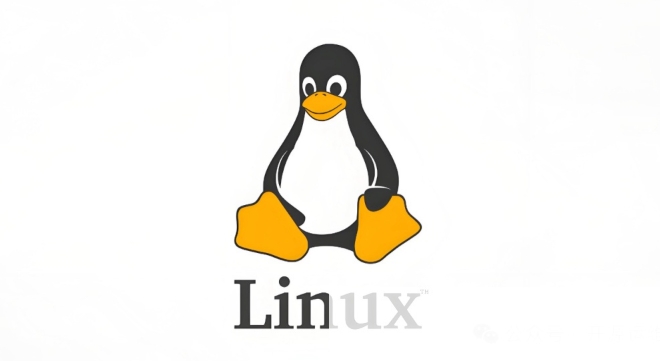Installing Linux system is friendly to novices. The key steps include: 1. Select a suitable distribution such as Ubuntu or Linux Mint; 2. Use Rufus or Ventoy to create a bootable USB drive; 3. Enter the BIOS settings to boot from the USB drive and complete the system installation; 4. Update the system, install the software, and adjust the display and input method settings after installation. The entire process takes about 15 to 30 minutes. When encountering problems, you can find online solutions. The actual operation is not complicated.

Installing a Linux system is actually not as complicated as you think. As long as the steps are right, novices can complete it smoothly. The key is to select the right distribution, prepare the installation media, and understand the basic partitioning and setup process.

Choose the Linux distribution that suits you
There are many "versions" of Linux, which are the so-called "distributions". Common ones include Ubuntu, Debian, Fedora, Arch Linux, etc. If you are using it for the first time, it is recommended to start with Ubuntu or Linux Mint . They are active in the community, rich in documentation, and have a graphical interface that is suitable for daily use.

- Ubuntu : Suitable for most users, stable updates, and suitable for beginners.
- Linux Mint : Based on Ubuntu, it comes with more drivers and software support, and the interface is closer to Windows.
- Fedora : Suitable for developers or people who like cutting-edge technology.
- Arch Linux : Suitable for advanced users, with high freedom but a complicated installation process.
After selecting, go to the official website to download the corresponding ISO image file.
Create a bootable USB installation disk
After downloading the ISO file, you need to write it to the USB drive and make it into a boot disk that can be used to install the system. Here are a few common tools:

- Rufus (Windows) : Simple operation, almost one click to complete.
- Ventoy (cross-platform) : You can place multiple system images on the same USB drive.
- Startup Disk Creator (included in Ubuntu) : Suitable for those who already use Linux.
Prepare an 8GB or larger USB drive, plug in the computer, run the tool, select the ISO file you downloaded, and start writing.
Basic steps to install Linux
After plugging in the USB flash drive, restart the computer, enter the BIOS settings to boot from the USB flash drive (usually press F2, F12, or Del keys), and then enter the installation interface.
Several key points to pay attention to during the installation process:
- Language and region settings : Select Chinese and the time zone, which makes it more convenient to use later.
- Network connection : It is recommended to connect to the Internet before installation, and the system will automatically download some updates and drivers.
- Disk partition :
- If you are installing Linux separately, you can select "Erase Disk and Install".
- If you want to coexist with Windows (for example, coexist with Windows), select Coexist with Windows or Manual Partition.
- Manual partitioning is recommended to keep at least three partitions:
/(root),/home(user data) andswap(virtual memory).
- Create a user account : Remember to set a strong password.
The entire process takes about 15 to 30 minutes, depending on the hardware speed.
Basic settings after installation
After the system is installed, there are some small details that can optimize the user experience:
- Update the system: Open the terminal and enter
sudo apt update && sudo apt upgrade(suitable for Ubuntu-like systems). - Install commonly used software: browser, office suite, decoder, etc.
- Adjust display settings: such as adjusting resolution and turning on night mode.
- Install Chinese input method: such as Fcitx or Ibus, combined with Sogou or Google Pinyin.
These operations can make the new system adapt to your usage habits faster.
Basically that's it. Although it seems a bit too much, it is not difficult to take it step by step. Many people will encounter some minor problems when installing the system for the first time, such as boot failure or partition error. There are many solutions to these problems online. Don't be afraid of trouble, Linux is for playing.
The above is the detailed content of How to install linux. For more information, please follow other related articles on the PHP Chinese website!

Hot AI Tools

Undress AI Tool
Undress images for free

Undresser.AI Undress
AI-powered app for creating realistic nude photos

AI Clothes Remover
Online AI tool for removing clothes from photos.

Clothoff.io
AI clothes remover

Video Face Swap
Swap faces in any video effortlessly with our completely free AI face swap tool!

Hot Article

Hot Tools

Notepad++7.3.1
Easy-to-use and free code editor

SublimeText3 Chinese version
Chinese version, very easy to use

Zend Studio 13.0.1
Powerful PHP integrated development environment

Dreamweaver CS6
Visual web development tools

SublimeText3 Mac version
God-level code editing software (SublimeText3)
 How to troubleshoot DNS issues on a Linux machine?
Jul 07, 2025 am 12:35 AM
How to troubleshoot DNS issues on a Linux machine?
Jul 07, 2025 am 12:35 AM
When encountering DNS problems, first check the /etc/resolv.conf file to see if the correct nameserver is configured; secondly, you can manually add public DNS such as 8.8.8.8 for testing; then use nslookup and dig commands to verify whether DNS resolution is normal. If these tools are not installed, you can first install the dnsutils or bind-utils package; then check the systemd-resolved service status and configuration file /etc/systemd/resolved.conf, and set DNS and FallbackDNS as needed and restart the service; finally check the network interface status and firewall rules, confirm that port 53 is not
 Install Guacamole for Remote Linux/Windows Access in Ubuntu
Jul 08, 2025 am 09:58 AM
Install Guacamole for Remote Linux/Windows Access in Ubuntu
Jul 08, 2025 am 09:58 AM
As a system administrator, you may find yourself (today or in the future) working in an environment where Windows and Linux coexist. It is no secret that some big companies prefer (or have to) run some of their production services in Windows boxes an
 How to find my private and public IP address in Linux?
Jul 09, 2025 am 12:37 AM
How to find my private and public IP address in Linux?
Jul 09, 2025 am 12:37 AM
In Linux systems, 1. Use ipa or hostname-I command to view private IP; 2. Use curlifconfig.me or curlipinfo.io/ip to obtain public IP; 3. The desktop version can view private IP through system settings, and the browser can access specific websites to view public IP; 4. Common commands can be set as aliases for quick call. These methods are simple and practical, suitable for IP viewing needs in different scenarios.
 How to Install NodeJS 14 / 16 & NPM on Rocky Linux 8
Jul 13, 2025 am 09:09 AM
How to Install NodeJS 14 / 16 & NPM on Rocky Linux 8
Jul 13, 2025 am 09:09 AM
Built on Chrome’s V8 engine, Node.JS is an open-source, event-driven JavaScript runtime environment crafted for building scalable applications and backend APIs. NodeJS is known for being lightweight and efficient due to its non-blocking I/O model and
 System requirements to install linux
Jul 20, 2025 am 03:49 AM
System requirements to install linux
Jul 20, 2025 am 03:49 AM
Linuxcanrunonmodesthardwarewithspecificminimumrequirements.A1GHzprocessor(x86orx86_64)isneeded,withadual-coreCPUrecommended.RAMshouldbeatleast512MBforcommand-lineuseor2GBfordesktopenvironments.Diskspacerequiresaminimumof5–10GB,though25GBisbetterforad
 How to Install MySQL 8.0 on Rocky Linux and AlmaLinux
Jul 12, 2025 am 09:21 AM
How to Install MySQL 8.0 on Rocky Linux and AlmaLinux
Jul 12, 2025 am 09:21 AM
Written in C, MySQL is an open-source, cross-platform, and one of the most widely used Relational Database Management Systems (RDMS). It’s an integral part of the LAMP stack and is a popular database management system in web hosting, data analytics,
 Ubuntu 25.04 'Plucky Puffin”: A Bold Leap Forward with GNOME 48 and HDR Brilliance
Jul 12, 2025 am 09:28 AM
Ubuntu 25.04 'Plucky Puffin”: A Bold Leap Forward with GNOME 48 and HDR Brilliance
Jul 12, 2025 am 09:28 AM
Ubuntu has long stood as a bastion of accessibility, polish, and power in the Linux ecosystem. With the arrival of Ubuntu 25.04, codenamed “Plucky Puffin”, Canonical has once again demonstrated its commitment to delivering a
 How to Install MongoDB on Rocky Linux and AlmaLinux
Jul 12, 2025 am 09:29 AM
How to Install MongoDB on Rocky Linux and AlmaLinux
Jul 12, 2025 am 09:29 AM
MongoDB is a high-performance, highly scalable document-oriented NoSQL database built to manage heavy traffic and vast amounts of data. Unlike traditional SQL databases that store data in rows and columns within tables, MongoDB structures data in a J






